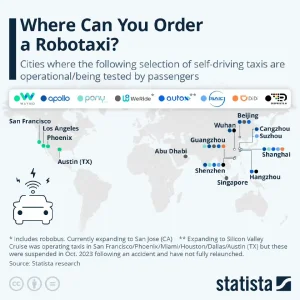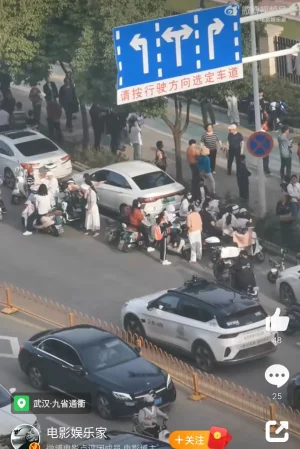- Joined
- Jul 3, 2024
- Messages
- 1,755
- Likes
- 2,295
Racist attack to person, i m reporting.
Hypocrite but since you want to play victim next time you ever insult me or try ti imply Mexicans are Drug dealers hypocrite I will report you Hypocrite
Racist attack to person, i m reporting.
Hypocrite but since you want to play victim next time you ever insult me or try ti imply Mexicans are Drug dealers hypocrite I will report you Hypocrite
Please also list how many foreign students especially from the west are studying at these top 10, 20 , 50 or 100 "world ranked universities" in China. While you're at it you can probably also inform us of the number of Chinese students in the west . I'm sure MSS has all the data compiled. All you've to do is share it here.QS said 3 Chinese colleges among world top20

QS World University Rankings 2026: Top global universities
Explore QS World University Rankings® 2026 of 1501 institutions based on 8 key ranking indicators- academics, faculty/student ratio, international student & more.www.topuniversities.com

Tesla Shanghai factory hits milestone output of 3 mln cars

The 3 millionth vehicle produced by Tesla Gigafactory Shanghai rolls off the assembly line in Shanghai, east China, Oct. 11, 2024. The 3 millionth vehicle produced by Tesla Gigafactory Shanghai rolled off the assembly line on Friday, reaching a new milestone amid the U.S. company's commitment to developing along with China's new energy sector. (Xinhua)
SHANGHAI, Oct. 11 (Xinhua) -- The 3 millionth vehicle produced by Tesla Gigafactory Shanghai rolled off the assembly line on Friday, reaching a new milestone amid the U.S. company's commitment to developing along with China's new energy sector.
The vehicle, a fully electric Model Y, drove off the assembly line at 6 p.m., the company said.
Tesla's Shanghai plant, the carmaker's first gigafactory outside the United States, began construction in January 2019, and turned out the first vehicle in December of that year.
The Shanghai factory produced its first 1 million cars in over 30 months, while it took about 13 months for the output to climb from 2 million to 3 million, according to the company.
The first three quarters of this year saw the Shanghai factory deliver 675,000 vehicles, accounting for over half of the company's global deliveries during the period, Tesla said.
One third of the 3 million vehicles produced by the factory have been sold to markets outside the Chinese mainland, including Europe and Asia-Pacific countries, it said.
In May, the U.S. company broke ground on a mega factory in Shanghai to manufacture its energy-storage batteries Megapacks. The new factory is expected to start operation in the first quarter of next year.


 electrek.co
electrek.co
I have studied overseas in Japan and New Zealand, I never saw in both places anything I would not have studied in Mexico.Please also list how many foreign students especially from the west are studying at these top 10, 20 , 50 or 100 "world ranked universities" in China. While you're at it you can probably also inform us of the number of Chinese students in the west . I'm sure MSS has all the data compiled. All you've to do is share it here.
BYD's 8 millions EV to 9 millions EV:
Jul 5, 2024

BYD produces its 8 millionth EV, takes three months for last million · TechNode
BYD said on Thursday it has produced its eight millionth electric vehicle, just three months after producing its seven millionth unit globally at itstechnode.com
Sep 25 2024
BYD rolls 9 millionth NEV off its assembly lines with 1 million built in last 3 months alone

BYD rolls 9 millionth NEV off its assembly lines with 1 million built in last 3 months alone
Yes, you read that correctly. Nine million new energy vehicles (NEVs) built. Chinese automaker Build Your Dreams (BYD) continues to...electrek.co

 www3.nhk.or.jp
www3.nhk.or.jp



Tesla FSD works in all cities in North America and Europe
I don't think this part is difficult to address at all by the CCP isn't it @rockdog ? All it means is more subsidies .EU to Impose Tariffs Up to 45% on Chinese Electric Vehicles
US Republican presidential candidate Donald Trump has vowed to impose a 100-percent tariff on every car manufactured in and imported from Mexico if he is reelected.
- The new tariffs will be in effect for a period of five years
- China has threatened tariffs on Europe’s car and dairy sectors
The former US president made the remark on Tuesday while speaking about his plans to boost manufacturing in the southern state of Georgia, a battleground state in November's presidential election.
Trump has previously proposed applying a 100-percent tariff to cars made in Mexico by Chinese firms.

Trump vows to impose 100% tariffs on cars coming from Mexico | NHK WORLD-JAPAN News
US Republican presidential candidate Donald Trump has vowed to impose a 100-percent tariff on every car manufactured in and imported from Mexico if he is reelected.www3.nhk.or.jp
Tesla FSD woin all cities in North Amerinot.the and Europe
So FSD and robotaxi are two different business models, not the same thing.
Tesla CyberCab is equivalent to Baidu Apollo go.
View: https://x.com/CarlZha/status/1844752323832316380?t=qE_uDoKlXQnD2LYxNlueAA&s=19
Xpeng and Huawei have same FSD stuff.
View: https://youtu.be/U_iLJHav_w0?si=PGDvPFE2AaC4yECo
View: https://youtu.be/htPHO4rY4oA?si=26ONGvY3tDd231WW

hate to breaarour buouside,but robotaxi is not a fully autonomous solution. FSD requires driver supervision; robotaxi requires Remote Assistance from an army of human in the loop interveners.

On the Go: The Humans Steering the Future of China’s Robotaxis
Safety operators and the data they collect are playing a crucial role as Baidu’s Apollo Go program looks to further expand in Wuhan and beyond.www.sixthtone.com
The safety operators intervene very 4-5 km. You can sell the snake oil, elsewhere. Tesla is the only at scale FSD deployment currently without human in the loop intervention. Only reason this is taking off in China and not US is that the cost of labor in China is cheap. It has nothing to do with Chinese technology being superior.
In simple terms, China had figured out how to scale autonomy by scaling remote assistance operators for self driving vehicles. This model doesn’t work in the US because the cost of labor is much higher, hence the delay in launching at scale.


Actually I agrgood conditionith you. In India too Hybrid mode shall be needed if FSD is ever to be implemented. All the corner cases shall be needed to be handled by a driver. However intervention can taper off with time if manual intervention can be fed back to FSD algo as some sort of reinforcement learning
Yeah so the technology is nothing special, China has more humans than US, therefore more cities deployedAgain, u compared robotaxi with FSD, u were wrong. FSD current is mainly desgiened for personal drvier, but robotaxi operated by firm. From business model to insurance and legal, they are different, u made wrong comparison.
View attachment 12132
Different nations have different solutions on robotaxi.
China has more complicated traffic conditions than USA, which means it has more "corner cases" on initial stage.
eg.
Apollo Go jamed when the school off the class and parents waiting out ouside.
According to Chinese traffic law, vechile must wait if there was kids out from school.So it waited.10mins, made passenger went crazy.
At this corner case, the remote driver had to do something.
So the more corner cases being tested, there will be less remote driver to robotaxi ratio in the future.
View attachment 12134
If compare to india, India would face more complicated situation, like worse road condition, more animals penetration on lanes, which means there must be more interfere from human if India will lauch similar service.
Plus China has 70% of worlds 5G base station, which only 1ms delay, but 4G has 10ms delay. So 5:1 remote driver to robotaxi raito is still reaonable, no matter from business logic to employment as a social stability issue.
Ahh dont worry. There are already companies working on autonomous driving even on rural road conditions. One of them is in initial stages of testing its own FSD models. And no it does not have any Chinese connection afaik.As far as i had discussion with my former Indian team, maybe Noida and Guragang have good road.condition to make first robotaxi application in Inida.
